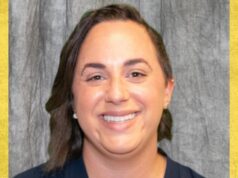
Against a background of division in the United States vascular surgery has come of age in Europe where it has become recognized as its own specialty. It has been an evolutionary process with remarkably little antagonism and fairly good humor.The story partly began in 1987 when the European Society for Vascular Surgery was founded in London and shortly after this, around 1991, a so-called “European Council of Vascular Surgery” was convened in Val d’ Aosta at the top of a mountain almost as Italy becomes France. The discussions at Val d’ Aosta triggered by Professor Domenico Palombo had the intention of forming a European Board of Vascular Surgery but unfortunately there was no link within any official organization in Brussels. It fell to Professor Roger Greenhalgh and Hero van Urk who were officers of the ESVS at the time to establish the potential link in Brussels. They emerged with the information that the European Union of Medical Specialists (UEMS) was the only organization that had any hope of representing specialties across Europe. It was found that the UEMS was at the time a union of the 15 European Union countries plus the three from Switzerland, Norway and Iceland. It was soon discovered that these 18 countries were sending a surgical representative on behalf of their member state to UEMS meetings of the so-called “Section of Surgery”.
From 1994, Roger Greenhalgh was elected to represent the United Kingdom through the proper channels after discussion within the Royal College of Surgeons and on behalf of the Council of the Association of Great Britain and Ireland Surgeons through the nominating body, which is the British Medical Association. Every member of the Section of Surgery UEMS was elected in this way and there are generally two members for each UEMS country bringing the total to 36.
In 1993, the Section of Surgery created the European Board of Surgery with the same elected members meeting alongside each other. The European Board has its own President who sits alongside the President of the Section and acts as a joint chairman, the Presidents of Section for political matters and the Board chairman for Board matters. In 1996, through enthusiasm from the vascular surgeons an invitation was made to the vascular surgeons to create a Division of Vascular Surgery being a division of the Section of Surgery. The Division of Vascular Surgery was instantly granted its own full Board with its officers and commenced the European Board of Surgery Qualification (EBSQ-VASC) in 1996. Peter Harris and Jaap Buth were the founding Presidents and Secretaries of the Division, and Board of Vascular Surgery and are to be congratulated for their foresight and energy. They arranged for those who had been involved with Val d’ Aosta to seek nomination through the proper channels and duly the Division of Vascular Surgery and European Board of Vascular Surgery was properly created in Brussels.
Over the years, the European Board of Vascular Surgery has outshone other Boards such that by the year 2000 the Section of Surgery and European Board of Surgery granted specialty status to General Surgery as a Division of Surgery thus to indicate that general surgery was not to be regarded as the envelope but as one of the specialties of surgery. The Division of Coloproctology commenced in 1998, Division and Board of Traumatology in 1999, endocrine surgery and surgical oncology have commenced since that time.
The Division of Vascular Surgery and European Board of Vascular Surgery have continued from strength to strength currently under the Presidency of Fabrizio Benedetti-Valentini and their energetic recent Secretary, Professor Christos Liapis, whose work as been recognized to the extent that he has been named the new President of the European Society for Vascular Surgery.Benedetti-Valentini communicated that the European Board of Vascular Surgery sought specialty status for a number of reasons. They were well pleased with their somewhat autonomous European Board of Vascular Surgery, they did not claim interference from the European Board of Surgery but with the need to develop catheter skills, endovascular techniques, there was less time to learn general surgical methods. There are now greater needs to liaise with vascular radiologists and to learn the techniques, the specialty seemed to have come of age and Benedetti-Valentini supported by his members wished to push for a separate specialty status.
The initial reaction of the Section of Surgery was shock and to ask the question what the European Board of Vascular Surgery could possibly achieve being separate that had not been achieved in its short lifetime. There was no answer save that the vascular surgeons felt they had come of age and the patients were demanding specialty surgeons not a generalist. There was a feeling that it is the era of the specialist not the generalist. They pressed for specialty status and this was taken to a meeting of the Section of Surgery in May 2004 and considered by the members. An exciting debate took place and as chance would have it Professor Roger Greenhalgh was in the Chair as President of the European Board of Surgery as the Section of Surgery was seeking a new President on that agenda. Professor Michael-Jurgen Polonius was elected President of the Section of Surgery and to take the chair on the next occasion in Warsaw. The matter was to come up at the Management Council of the UEMS in the Lisbon meeting in October and at the next meeting of the Section of Surgery in September in Warsaw, Professor Polonius took the chair and listened to an ear-bending representation from the conservative-minded surgeons to oppose the creation of the Section of Vascular Surgery.
Dr Bernard Maillett listened to the debate and had already advised that he thought the Management Council would achieve a two-thirds majority to create a new Section because he felt that the vascular surgeons satisfied the various criteria for a new Section. A new Section can be created if the specialty is recognized in more than a third of the member states of the European Union. At the time one-third would be six states and Benedetti-Valentini obtained signatures from more than these. At the time of the Management Council the European Union member states were 25, of which all but Latvia joined the UEMS, the additional three, Iceland, Norway and Switzerland, brought the number to 28. At the meeting in Lisbon, there were actually 23 countries represented each with one vote. By Lisbon, however, one-third recognition had already passed. It is also demanded that “the specialty must be effectively carried out in exclusive practice by competent specialists” – it is. Also, “the number of these specialties must be sufficient to establish from among their members, panels of examiners or recognition committees in that discipline” – they exist. “A specialty must be practiced in institutions with sufficient training facilities for them to be designated as training centers” – there are such training centers. A further Rule of Procedure is that “the Management Council may seek the views of specialist Sections affected by the formation of the new Section: the Management Council has the power to create a specialist Section for a discipline listed in the Clinical Directives for more than one-third of the member states in the European Union. Its formation must be proposed by a national association which is a member of the UEMS and accepted by two-thirds of the voting members of the Management Council”. Indeed vascular surgery is listed in the Medical Directives and in the European Union and so it was down to the vote of the Management Council.
What happened in Lisbon?
After Benedetti-Valentini and Liapis spoke, Professor Polonius on behalf of the Section of Surgery and counseled against the vascular surgeons breaking away and argued that there should be some structure which kept surgeons together. That concept was not opposed by the vascular surgeons who nevertheless held out for full Section status.
“Federation of surgical disciplines”
The Management Council had encouraged the aggregation of 11 surgically related disciplines to meet together with a view to forming a “Federation of surgical disciplines”. Professor Roger Greenhalgh was nominated in 2004 to serve as Chairman and President for a three-year period until 2007. The Section of Surgery were greatly in support of Professor Greenhalgh’s activities with the Federation and took the view that if vascular surgery and any specialty became separated from surgery then membership of the Federation would be indicated for all in the interests of holding surgery together for lobbying purposes. It was well recognized that separate specialty status is required in the interests of the specialty but in the interests of lobbying and political strength, the larger the group the better and a “Federation of surgical disciplines” in European terms provided that strength potentially if it represents all of the surgically-related disciplines with full section status to join together as a voluntary meeting of equals.
The vote
The Management Council voted with 6 abstentions, 2 against and 13 for the creation of a Section of Vascular Surgery. The President announced the successful outcome of the vote and tea was taken before it was realized that a two-thirds majority had not been achieved. It was pointed out that 1 country had voted twice, once to abstain and once against, thus that country cast 2 votes against the creation of vascular surgery as a separate Section. The first vote was null and void and after some lobbying a second vote was taken with care that each country had only 1 vote. On this occasion there were 5 abstentions, 2 against and 16 for. The result was deemed adequate to declare in favor of a new Section of Vascular Surgery and in due course the vascular surgeons promised to join a Federation of surgical disciplines as equal members and with enthusiasm.
Vascular surgery has come of age in Europe in 2004 at the Management Council of the UEMS. After a 13 year saga since the Val d’ Aosta meeting legitimacy has been achieved in not only having had an effective European Board of Vascular Surgery since 1996 but the full specialty recognition of vascular surgery with its own Section within the UEMS. Vascular surgery is a registered specialty in Europe. Alongside the other surgical disciplines there will now be the opportunity of examining joint interests with a view to taking them through the European political channels with a single voice and a solid base. It can be said the evolution has occurred effectively for vascular surgery with remarkable lack of bloodshed and irritation and acceptance on all fronts.













